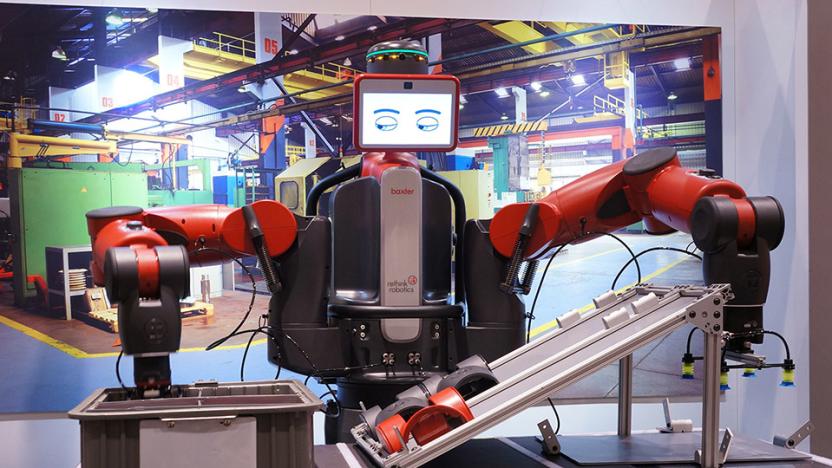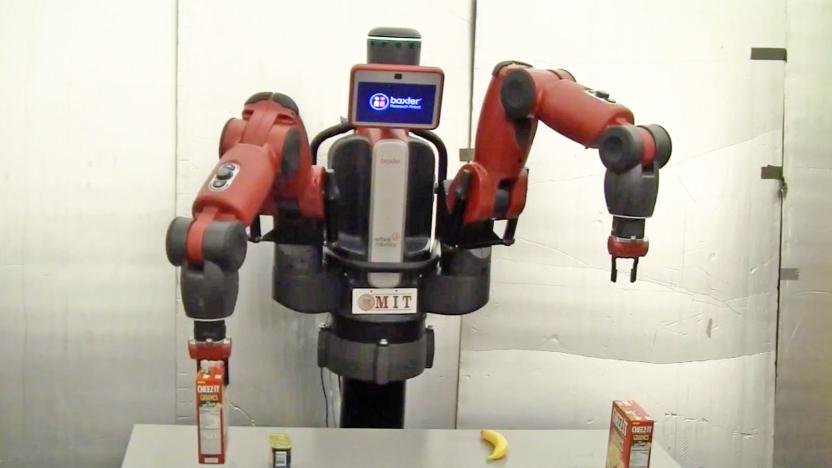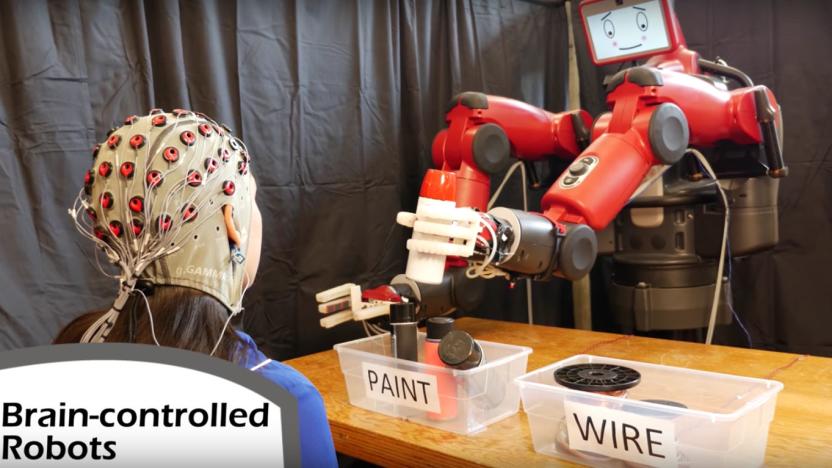rethinkrobotics
Latest

Collaborative robot maker Rethink Robotics shuts down
For a while, it looked like Rethink Robotics would shake up the world with its collaborative robots: rather than having to write code, workers could teach bots to perform tasks by guiding them through the process. However, the market doesn't appear to have shared its vision. Rethink has suddenly shut down after a potential buyer backed out of a deal. Sales of Baxter and Sawyer robots weren't meeting expectations, Rethink chief Scott Eckert said, leaving the company low on cash. It really needed this acquisition to go through, in other words.

Robots learn to understand the context of what you say
It can be frustrating when telling robots what to do, especially if you aren't a programmer. Robots don't really understand context -- when you ask them to "pick it up," they don't usually know what "it" is. MIT's CSAIL team is fixing that. They've developed a system, ComText, that helps robots understand contextual commands. Effectively, researchers are teaching robots the concept of episodic memory, where they remember details about objects that include their position, type and who owns them. If you tell a robot "the box I'm putting down is my snack," it'll know to grab that box if you ask it to fetch your food.

MIT finds an easy way to control robots with your brain
A team from MIT's Computer Science and Artificial Intelligence Laboratory (CSAIL) wanted robots to be a more natural extension of our bodies. See, you'd usually have to issue vocal or very specific mental commands to control machines. But the method the CSAIL team developed works simply by reading your brain and detecting if you've noticed an error as the robot performs its tasks.

Rethink's workplace robot is now smarter and easier to train
Think of a warehouse robot and a huge, cumbersome machine probably comes to mind. They're reliable, but difficult to reprogram if you're not a trained specialist. Rethink Robotics is trying to tackle the problem with Sawyer, a one-armed robot with a tablet for a face. A new software update called Intera 5 means it's now easier to program for new, custom tasks in the workplace. At its core is a "behavior engine" that can be visualised like a logic tree. Similar to basic coding applications, that makes it easier for people to change specific movements and 'if this, then that' style reactions.

This factory robot is small, precise and human-friendly
Picture a typical factory robot in your head and you'll probably see a cold, unsympathetic arm performing relatively simple tasks. You may want to shake that image soon, though. Rethink Robotics has taken the wraps off of Sawyer, a smaller sibling to its earlier Baxter model that's built for handling high-precision tasks that most machines can't tackle, such as testing circuit boards. The one-armed robot is designed to be as people-friendly as its predecessor, with a touchscreen for a face and software that lets you teach it by guiding it with your hands. The big improvements are in the arm itself. Sawyer is using new actuators and joints that make it smaller, faster and more precise, which should help with assembling or verifying lots of tiny parts.

Rethink delivers Baxter the friendly worker robot, prepares us for our future metal overlords (video)
No one would characterize existing factory robots as especially warm and fuzzy: they're usually disembodied limbs that are more likely to cut you than hug you. Rethink Robotics wants to put a friendly face on those machines, both figuratively and literally. Its about-to-ship Baxter worker robot carries a touchscreen face that's as much about communicating its intent as giving humans something more relatable. Likewise, it's designed to be easily programmed by its organic coworkers and react appropriately -- you guide Baxter by one of its two arms to tell it what to do, and its combination of cameras and a quad-core processor let it adapt to real-world imperfections. Even the series elastic actuators in its arms give it a softer, subtler movement that's less likely to damage products or people. While Baxter isn't as ruthlessly quick as most of its peers, the relatively low $22,000 price and promise of an SDK for its Linux brain in 2013 should make it easier to accept than the six-digit costs and closed platforms of alternatives. We just hope we're not being lulled into a false sense of security as lovable robots invade our manufacturing base ahead of the inevitable Robopocalypse. [Thanks to everyone who sent this in]


